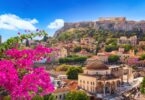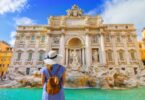Welcome to Southern Italy, a region rich in UNESCO World Heritage Sites, showcasing the diverse cultural and historical legacy of the area. While you’re wander through historic streets, marvel at medieval castles, and bask in the natural beauty that surrounds these cultural treasures. Whether you’re drawn to history, architecture, or simply seeking a memorable travel experience, Southern Italy’s UNESCO sites offer something for everyone.
Come and explore this remarkable region, where the past comes alive in the most captivating way.
The Trulli of Alberobello

In the town of Alberobello, Italy, you’ll find a number of buildings called “trulli,” which are an extraordinary example of mortar-less construction, a building technique with prehistoric origins that stands out on the UNESCO World Heritage list. Alberobello boasts the largest concentration of these remarkable dwellings in Puglia, the region affectionately known as the “heel” of Italy’s “boot.”
These distinctive structures, characterized by their conical roofs and stone masonry, are not just relics of the past but are actively integrated into the local community. In fact, a number of companies offer short-term rentals within these trulli, allowing visitors the opportunity of living within the walls of history.
Cilento and Vallo di Diano National Park

This expansive area that comprises Cilento and Vallo di Diano National Park combines natural beauty with historical depth. It includes the magnificent Greek temples of Paestum, the ancient town of Velia, and the Certosa di Padula, one of the largest monasteries in Italy.
Begin your journey by stepping back in time at the Greek Temples of Paestum, marveling at the majestic structures dating back to the 6th and 5th centuries BC. Wander through the ancient streets of Velia, where remnants of Roman baths and city walls whisper tales of bygone eras. Next, immerse yourself in the vibrant local culture by attending traditional festivals and cultural events. Or, simply unwind in charming coastal villages, savoring fresh seafood and soaking up the laid-back atmosphere of seaside life.
Castel del Monte in Andria

Castel del Monte marries formidable architectural design with elements of astronomical precision, showcasing the advanced understanding of the cosmos in the 13th century. Constructed under the orders of Emperor Frederick II, this fortress is a masterpiece that integrates Islamic, Norman, and Gothic architectural styles, reflecting the era’s cultural fusion and Frederick’s vast intellectual pursuits.
The geometric layout of Castel del Monte, particularly its iconic octagonal structure and the strategic positioning of its towers and windows were designed to align with celestial events, such as solstices and equinoxes, showcasing the castle’s dual role as a military stronghold and a monument to the scientific curiosity. Visitors will be drawn to the octagonal courtyard, where the interplay of light and shadow marks the passage of time. Climbing to the top of the towers offers panoramic views of the Apulian landscape, underscoring the fortress’s strategic military importance.
Your journey continues in the charming town of Andria, nestled near this historical marvel. Here, you can taste local delicacies in cozy trattorias, wander through streets lined with historic churches, and soak in the vibrant atmosphere of bustling piazzas.
The Sassi

The Sassi and the Park of the Rupestrian Churches of Matera are a network of prehistoric cave dwellings carved into the rocky hillsides. The park also contains over 150 churches, many adorned with frescoes, hewn from the rock. Step inside these remarkable dwellings to get a glimpse of how past generations lived, marveling at the inventiveness behind their construction. After learning about the region’s history, take a leisurely stroll along the scenic Belvedere viewpoint. Enjoy the panoramic views of the Sassi and the picturesque Gravina River below.
You May Also Like: Buon Natale! Why You Should Spend the Holidays in Italy
The Beech Forests of the Carpathians

Step into the serene beauty of the Beech Forests of the Carpathians, a transnational UNESCO site that spans several nations, including Slovakia, Ukraine, and parts of Germany and Romania. Begin your adventure by venturing into the heart of these majestic forests, where towering beech trees form a lush canopy overhead, connecting you with landscapes that have thrived for millennia. Follow well-marked hiking trails that meander through the forest, offering glimpses of rare plant species and abundant wildlife along the way.
Keep your eyes peeled for elusive creatures like brown bears, wolves, and lynx, as well as an array of bird species that call these forests home. Next, stroll among the alpine meadows and crystal-clear mountain streams, perfect spots for picnicking and relaxation.
FAQs:
Q: How do I get to Southern Italy’s UNESCO sites?
A: Southern Italy is well-connected by train, bus, and air. Major cities like Bari and Naples serve as transportation hubs for accessing nearby sites.
Q: When is a good time of year to visit these sites?
A: Spring (April to June) and fall (September to October) offer pleasant weather and fewer crowds, making it ideal for exploring the sites comfortably.
Q: Are there entrance fees for visiting the UNESCO sites?
A: Entrance fees for UNESCO sites in Southern Italy vary. For example, some privately-owned trulli in Alberobello may charge a small fee, while guided tours of cave dwellings in Matera can cost around €10-€15 per person. The archaeological site of Paestum typically charges €7 to €10 per person for entry, while Castel del Monte and Pompeii may have fees of approximately €10 and €16 per person, respectively, with deals available for certain groups.
Q: Can I take photographs at the UNESCO sites?
A: Yes, photography is usually allowed at the sites, but restrictions may apply in certain areas. Be sure to check signage and ask staff for guidance.
Q: Are there accommodations available near the UNESCO sites?
A: Various accommodations near UNESCO sites in Southern Italy include Trulli Holiday Albergo Diffuso in Alberobello, Sextantio Le Grotte della Civita and Hotel Sassi in Matera, Hotel Palma and Hotel Santa Caterina in Naples, and Hotel Ristorante Laura in Paestum. It’s essential to research and book accommodations in advance to secure availability and the best rates for your stay.
Have you ever visited a UNESCO site in Italy? Tell us in the comments section below!








